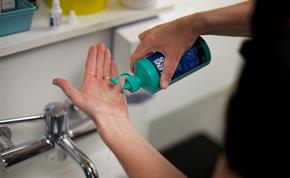
Hospitals in the UK have seen an increase in the number of carbapenemase-producing enterobacteriaceae (CPE) incidents.
Enterobacteriaceae is a bacteria that lives harmlessly in the gut. However if it gets into the wrong place, it can lead to an infection. The enterobacteriaceae bacteria is the most common cause of opportunistic urinary tract infections, intro-abdominal and bloodstream infections. It can spread through direct or indirect contact with contaminated surfaces.
Carbapenems are a valuable group of antibiotics used in the treatment of drug-resistant gram-negative bacterial infections and are often the last defence for serious infections caused by enterobacteriaceae. But an increasing number of strains of enterobacteriaceae are becoming resistant to carbapenem antibiotics.
Patients who are at high risk of CPE are those with a history of:
If you need to transport a patient with either confirmed or possible CPE to hospital, it is important to tell the team before arrival, to make sure an isolated cubicle is available. If the patient has a card or letter regarding their infectious status, this should be taken with the patient to the receiving healthcare unit and handed over to receiving staff. Patients with active diarrhoea or incontinence must be transported on their own and not as part of a group of patients.
You will need to follow strict IPC standard precautions and thorough hand decontamination before and after all patient contact. Personal protective equipment (PPE) should be worn by all staff who have contact with the patient, especially when a patient is symptomatic with diarrhoea. This includes:
After transporting a patient, the ambulance surfaces and equipment should be cleaned and the floor needs to be mopped with a detergent and disinfectant solution. If the patient has had an episode of uncontained diarrhoea or loss of blood or bodily fluids then the vehicle will require a decontamination clean, in line with the decontamination manual.
If you have any questions related to CPE cases, please contact the IPC team - IPCAdministrator@eastamb.nhs.uk.
Published 3rd October, 2016